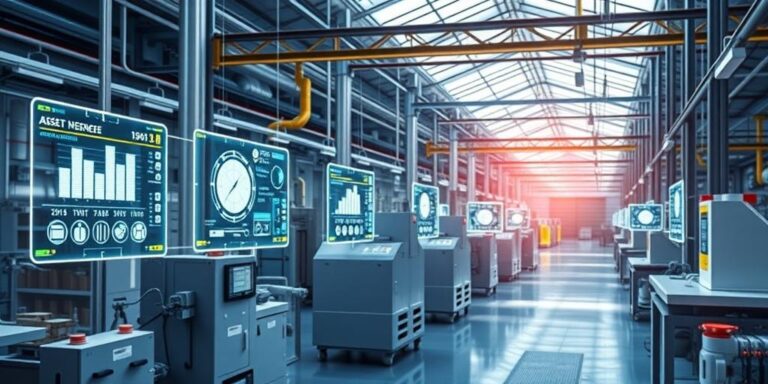The Future of Asset Tracking and Management with IIoT (2025)
The Industrial Internet of Things (IIoT) is rapidly transforming how businesses track and manage their assets. By 2025, we can expect even more sophisticated and integrated IIoT solutions that offer unprecedented visibility, efficiency, and control. This article explores the key trends and advancements shaping the future of asset tracking and management.
Enhanced Real-Time Visibility
Real-time tracking is already a significant benefit of IIoT, but future systems will offer even greater precision and detail. Advances in sensor technology, GPS, and wireless communication will allow for near-instantaneous updates on asset location, condition, and usage.
- Advanced Sensors: Smaller, more durable, and energy-efficient sensors will be embedded in a wider range of assets, providing comprehensive data.
- 5G Connectivity: The rollout of 5G networks will enable faster and more reliable data transmission, crucial for real-time tracking in remote or challenging environments.
- AI-Powered Analytics: Machine learning algorithms will analyze sensor data to predict maintenance needs, optimize asset utilization, and prevent failures.
Predictive Maintenance
Predictive maintenance will become a standard practice, driven by the ability of IIoT systems to monitor asset health and performance continuously. By analyzing data patterns, businesses can anticipate potential issues and schedule maintenance proactively, reducing downtime and extending asset lifecycles.
- Condition Monitoring: IIoT devices will monitor critical parameters such as temperature, vibration, and pressure, providing early warnings of potential problems.
- Data-Driven Insights: Analytics platforms will identify correlations between operating conditions and failure rates, enabling more accurate predictions.
- Automated Workflows: Maintenance requests will be automatically generated based on predictive insights, streamlining the maintenance process.
Improved Security
As IIoT networks expand, security will be a paramount concern. Future IIoT solutions will incorporate robust security measures to protect against cyber threats and ensure data integrity.
- End-to-End Encryption: Data will be encrypted at every stage, from the sensor to the cloud, preventing unauthorized access.
- Secure Authentication: Advanced authentication methods, such as biometrics and multi-factor authentication, will be used to verify the identity of users and devices.
- Anomaly Detection: AI-powered security systems will detect and respond to unusual activity, mitigating the risk of cyberattacks.
Integration with Other Technologies
IIoT will be increasingly integrated with other technologies, such as blockchain, augmented reality (AR), and digital twins, to create more powerful and versatile asset management solutions.
- Blockchain for Asset Provenance: Blockchain technology will be used to track the history and ownership of assets, ensuring transparency and accountability.
- Augmented Reality for Maintenance: AR applications will provide technicians with real-time guidance and information during maintenance tasks, improving efficiency and accuracy.
- Digital Twins for Asset Optimization: Digital twins, virtual replicas of physical assets, will be used to simulate different scenarios and optimize asset performance.
Enhanced Automation
Automation will play a key role in the future of asset tracking and management, reducing manual effort and improving efficiency. IIoT systems will automate tasks such as inventory management, asset allocation, and compliance reporting.
- Automated Inventory Management: IIoT devices will automatically track inventory levels and trigger reorders when necessary, minimizing stockouts and overstocking.
- Smart Contracts: Smart contracts will automate transactions and agreements related to asset usage and maintenance, reducing paperwork and administrative overhead.
- Robotics Integration: Robots and drones will be used to perform tasks such as asset inspection and maintenance in hazardous or difficult-to-reach locations.
Conclusion
The future of asset tracking and management with IIoT is bright, with advancements in real-time visibility, predictive maintenance, security, technology integration, and automation. By embracing these trends, businesses can unlock new levels of efficiency, productivity, and profitability. As we move closer to 2025, the adoption of IIoT solutions will only accelerate, transforming the way assets are tracked, managed, and utilized across industries.




